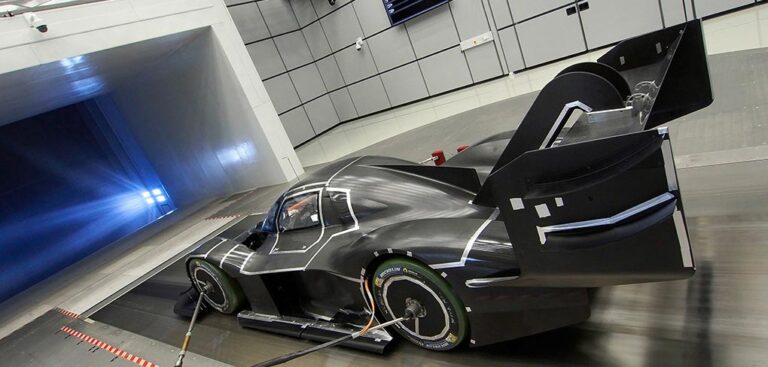VW Motorsport has revealed some of the challenges it faces in getting its 680bhp ID R electric prototype racer ready to take on the infamous Pikes Peak International Hill Climb race event.
The unusually high altitude of the Pikes Peak course brings with it very thin air, on average 35% thinner. To cope with this challenge, the ID R – like most Pikes Peak record challengers – has been fitted with a huge rear wing. Despite the thin air, VW claims that the amount of downforce the ID R can generate is greater than the car’s weight.
Unlike a combustion engine, which suffers from the thin air, an electric motor does not lose power at altitude. Additional benefits of the electric powertrain are that it does not need any drag-causing air intakes and needs far less cooling.
The aerodynamics of the ID R were developed partly using a 1:2 scale model in the wind tunnel, and partly using simulation software. The software was provided by Ansys, VW’s technology partner.
“We could not manage this solely with the data from the wind tunnel, where it is not possible to recreate the thin air, for example,” said François-Xavier Demaison, technical director at Volkswagen Motorsport. “The simulation was a great help in determining the dimensions required for the cooling system.”





